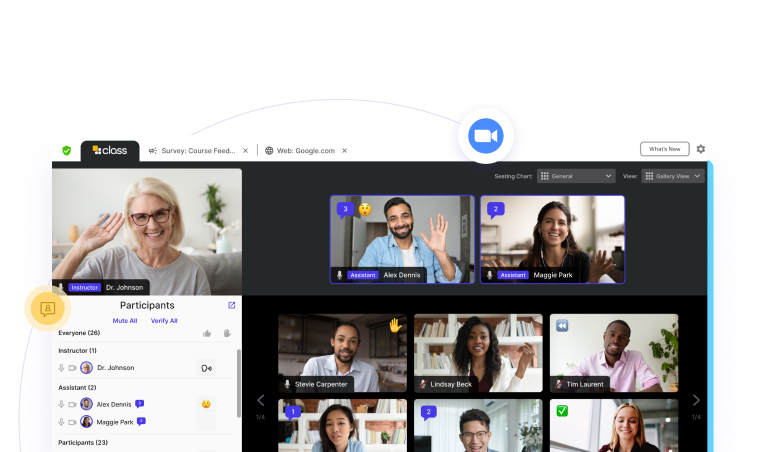
Mike Lovell is the SVP of Marketing at Class. He has dedicated his career to technology and the applications that can innovate the way people live and learn.

Mike Lovell is the SVP of Marketing at Class. He has dedicated his career to technology and the applications that can innovate the way people live and learn.

According to a study by The Department of Education, more than 25% of American parents reported that their child experienced declines in mental health and 14% reported increases in behavior problems. The same study states that one in four youth between the ages of 13-19 reported an increase in sleep loss due to worry, feeling unhappy or depressed, feeling constantly under strain, and loss of confidence in themselves.
Social-emotional learning (SEL) is key in combatting these concerns, supporting success through self-awareness, emotional regulation, and relationship building—skills that are crucial for navigating both academic and personal challenges.
Yet in light of this, K-12 schools are facing the mounting challenges of tightening budgets, limited resources, teacher shortages, and an increase in student mental health needs. These hurdles make it more difficult than ever to see that every student receives the SEL support they need. But with the right strategic learning models and supporting infrastructure, schools can provide true, impactful SEL experiences, even in online environments. Let’s dive into how.
Traditional, in-person learning structures have seen teachers and counselors providing direct SEL support through face-to-face interactions. However, these traditional methods can be difficult to scale, making it hard to offer consistent, individualized SEL to all students.
One of the most effective ways to integrate SEL into virtual classrooms is through the Virtual Whole-Child Supports model. In this model, students receive a range of resources and support through live, web-based experts who are available to give real-time and individual small-group support. The type of support provided includes mental health/teletherapy, digital coaching and counseling, online SEL programs, digital mentorship, and virtual health and wellness programs.
There’s also Shared Synchronous Instruction, in which a classroom teacher provides instruction to students online and face-to-face at the same time. This method allows one teacher’s reach to extend across multiple classrooms within or beyond the boundaries of a district, addressing the challenges of teacher shortages or tightening budgets that can hinder meaningful SEL.
Both of these models ensure equitable access to SEL resources and help teachers create necessary connections with students.
Effective SEL requires intentional strategies. These strategies must go beyond traditional, academic content and build strong, supportive relationships that create interactive and inclusive spaces. Consider these three key strategies that help foster SEL while driving engagement in online classrooms.
By combining and employing all of these strategies, schools can create a virtual learning environment where SEL is seamlessly woven into the fabric of everyday learning, ensuring that students not only succeed academically but also grow emotionally and socially.
As you’re looking to provide meaningful SEL in your virtual learning environment, technology will play a pivotal role in ensuring equitable access to resources. Digital tools can extend SEL support to all students, particularly those from underserved communities who may face additional barriers to accessing in-person services. By incorporating services like virtual counseling and online workshops into the learning environment, schools can offer students the support they need in a flexible and accessible way.
Teachers are the frontline in fostering SEL, but many aren’t equipped with the tools or training they need to effectively integrate SEL into their classrooms. Technology can enhance teacher capacity by providing them with the tools, resources, and professional development they need to support students properly. From online SEL curricula and digital assessments to platforms that allow for real-time feedback and communication with students, these tools can empower educators to be more proactive in addressing students’ needs. Technology can also help teachers streamline administrative tasks like attendance and engagement tracking, allowing them to focus more on building relationships and engaging with students on an emotional level.
Technology offers opportunities for increasing student engagement through features like gamified activities, live virtual check-ins, and interactive content. Thoughtful technology integration can also strengthen community connections by offering platforms for school-wide SEL initiatives, such as virtual assemblies or collaborative community service projects. These initiatives help students feel connected to their school culture and instill a sense of collective responsibility and emotional awareness that extends beyond the classroom.
As online learning continues to evolve, it presents unique opportunities to embed SEL into future-ready education models. By strategically leveraging technology, schools can create dynamic, scalable SEL frameworks that support academic success and promote emotional well-being, resilience, and social connection. The key to building a sustainable SEL strategy lies in integrating these practices into everyday learning structures, ensuring that SEL is woven into the fabric of both academic and personal growth.
For your school to truly thrive, you must prioritize SEL alongside academic excellence, using technology to enhance engagement, build authentic relationships, and provide equitable access to critical emotional support. By doing this, you’ll empower students to succeed long-term, both in school and in life.
To improve the efficacy of your virtual learning environment, speak with a Class expert today and explore tailored solutions for your school.

Mike Lovell is the SVP of Marketing at Class. He has dedicated his career to technology and the applications that can innovate the way people live and learn.

Mike Lovell is the SVP of Marketing at Class. He has dedicated his career to technology and the applications that can innovate the way people live and learn.
Get our insights, tips, and best practices delivered to your inbox

Sign up for a product demo today to learn how Class’s virtual classroom powers digital transformation at your organization.

Features
Products
Integrations